Local News
Construction of new home of Chesed Shel Emes complete – on time and on budget!
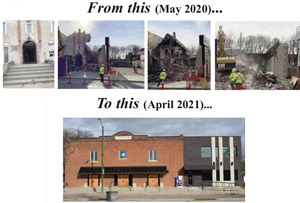 By BERNIE BELLAN It was just over a little over two years ago that the Chesed Shel Emes (the Winnipeg Jewish community’s burial society) launched a capital campaign, with the intent to build “a new facility to meet the needs of the Jewish community for many years to come,” an announcement in the May 10, 2019 issue of this paper said.
By BERNIE BELLAN It was just over a little over two years ago that the Chesed Shel Emes (the Winnipeg Jewish community’s burial society) launched a capital campaign, with the intent to build “a new facility to meet the needs of the Jewish community for many years to come,” an announcement in the May 10, 2019 issue of this paper said.
That announcement went on to say that the “Chesed Shel Emes’s south building is 114-years-old. It was built in 1905 as a private residence, and was purchased by the newly established Chesed Shel Emes in 1930. The building has met the needs of thousands of families over the years, and is showing its age. The attached chapel, built in 1947, is in good repair and will be a beautiful complement to the new building.
“The new building will provide a better and more comfortable experience for mourners and other visitors,” said Rena Boroditsky, Executive Director of the Chesed Shel Emes. “And for our volunteers, we are designing this new space with safety top of mind.”
“Having an effective and dignified infrastructure to prepare the deceased for burial and to support mourners is something a strong community does for itself.
“The funds raised will be used to: demolish the existing south building; build the new structure; protect the north building during demolition and construction; and furnish the new building with new equipment. The vision is of a building that is handsome, durable, and comforting and that includes state-of-the-art equipment for the care of the deceased. “The new 4,000-square-foot building will include the following features:
“A new, larger tahara room with stainless steel counters and more room for volunteers to perform their work safely (“tahara” is the ritual washing and dressing of a Jewish person in preparation for burial);
“new, state-of-the-art refrigeration units;
“new mechanical lifts for transferring bodies more safely;
“enhanced safety features to improve the experience of volunteers and ensure the dignity of the deceased;
“expanded storage space for caskets, shrouds, and supplies;
“an elevator for guests and volunteers with mobility issues;
“wheelchair access to the building;
“private meeting spaces for mourners, extended family, and friends to gather (currently, mourners use the boardroom);
“more comfortable accommodations for shomrim (“shomrim” are guards who watch over the deceased, so that they are never alone); (When I met with Rena on April 8 this year she added that now that there is quite a comfortable room for “shomrim” to guard over the deceased, she is hoping that family members themselves will partake of the mitzvah of serving as “shomrimr” for the deceased.)
“a safer, more accessible back staircase and entrance way;
“enhanced washroom facilities;
“refurbished office space;
“refurbished basement crawl space for additional storage (the current basement is undeveloped);
“state-of-the-art heating and cooling systems; and other features to create better conditions for mourners, staff, and volunteers, and to ensure the dignity of the deceased.”
Now, in less than one year, the new building is finished – on time and on budget.
According to Rena Boroditsky, the capital campaign, which was under the direction of the Jewish Federation’s former CEO, Bob Freedman, ended up raising $3.25 million.
In our May 13, 2020 issue we noted that, as of that date, there had been 400 individual donors who had contributed a total of $2.8 million. Bob Freedman said at the time: “The capital campaign has raised $2.8 million – that’s pretty darn good. Remember, in a capital campaign we give donors several years to pay off their pledges. In some cases we give three-five years – if it’s a larger pledge. Cash wise we’re doing pretty well. One of the reasons we’re starting (work on the demolition of the old house and eventually construction) is we have money to pay the contractor going forward – so it’s not just pledges. Close to half the pledges have already been redeemed.”
Fast forward to April 8, 2021 and, in a conversation with Rena Boroditsky, she told me that in the end there were 800 donors to the capital campaign. As well, the City of Winnipeg contributed $25,000 toward the construction of an elevator in the new building.
As Rena said, “For us to make a plan, raise the money and build it on time is quite an accomplishment.” (What is even more remarkable is that the City of Winnipeg has actually already given the Chesed an occupancy permit! For anyone who has dealt with the city on occupancy permits, that in itself is a minor miracle!)
Rena paid special tribute to Akman Construction for the speed and efficiency with which both the demolition of the old house that had served as the prior home of the Chesed was demolished and the construction of the new building was accomplished.
“We still have to buy some furniture,“ Rena noted, but the move back into the new home of the Chesed from what had been a temporary relocation to Chapel Lawn Funeral Home is proceeding rapidly. (Rena showed me her desk, which is situated for the time being in the middle of the floor in the Chesed chape, saying that she can hardly wait to move into her new office.)
As I toured the new building with Rena, she proudly showed me all the enhancements that will make the new Chesed something about which the entire community can be proud. Most notable perhaps is the additions of three – count ‘em, three washrooms! (No more waiting around to use a washroom before driving out to one of the cemeteries.)
Then, in one room that we entered, Rena said: “Here’s a surprise” – and she opened a special compartment housing the old safe that is a relic going back almost 100 years.
When I spoke with Bob Freedman last May, he explained what the safe is all about:
Bob: “Bernie, have you seen the safe? It must weigh 500 pounds.”
“So, what’s in the safe?” I asked.
“Not cash, unfortunately. When I first opened the doors, I opened a bunch of little books. People who passed away were recorded – by pencil or pen, by name – their Hebrew name, the date they died. So I looked up my mum, I looked up my dad. It’s really a history of the Jewish community. There was a big picture of the machers from the 1930s – all men, of course. There was a big picture of the ladies’ auxiliary – all looking very stern.
Bob added this observation: “By the way, if those men knew that the place was being run by a woman, they’d all be spinning in their graves.
“When you ask someone how do you define a Jewish community, as opposed to a community with Jews living in it, there are three things: A shul, a school, and a chevra kadisha – a burial society.
“Burial is one of the first things people thought about when they came from the old country. They looked for a place to bury people.”
Once the Chesed is fully functioning, Rena told me on April 8, it can be expected to handle between 115-140 deceased in a year. Last year was an especially bad one for deaths in our community, with 140 deaths recorded to the end of November – which is the end of the Chesed’s fiscal year, Rena noted. December – February was an even more brutal period for the number of Jewish deaths, she observed, with 68 deaths in those three months alone. (That number seems to have finally tapered off, thank God.)
And, while the Chesed serves as the home for Winnipeg’s Jewish community’s burial society (except for Temple Shalom’s own “chevra kadisha”, known as “Mikdash Shalom”, which is located at Chapel Lawn Funeral Home), very few funeral services actually take place in the Chesed chapel itself.
“Typically, we’ve only had about 30 funeral services a year held in the chapel here,” Rena noted. “But now that we have the new building, with a handicap ramp for the first time and three washrooms, once pallbearers are allowed to come back and funerals can once again allow guests to attend, we expect that there will be more funerals held at the Chesed itself,” Rena said.
She added that, as more and more members of the community remain unaffiliated with a synagogue, Rena anticipates an even greater use of the Chesed Shel Emes.
Local News
Thank you to the community from the Chesed Shel Emes
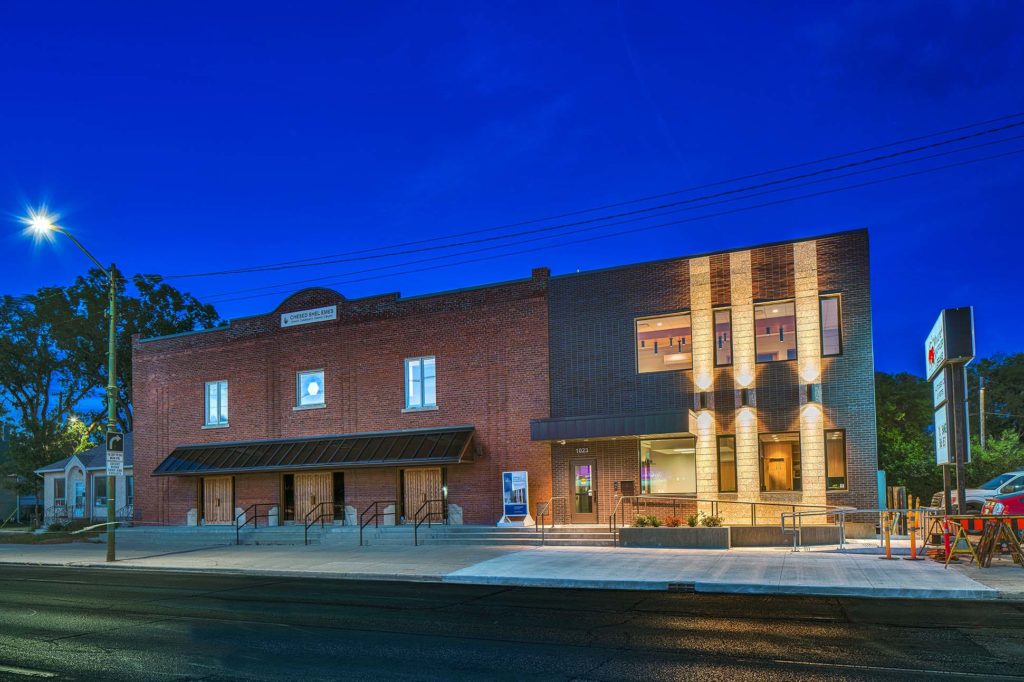
We’re delighted to share a major milestone in our Capital Campaign, “Building on our Tradition.” Launched in November 2018, this campaign aimed to replace our outdated facility with a modern space tailored to our unique needs. Our new building is designed with ritual at its core, featuring ample preparation space, Shomer space, and storage, creating a warm and welcoming environment for our community during times of need.
We’re grateful to the nearly 1,000 generous donors who contributed over $4 million towards our new facility. A $750,000 mortgage will be retired in November 2025, completing this monumental project in just seven years.
We’re also thrilled to announce that our Chesed Shel Emes Endowment Fund has grown tenfold, from $15,000 to $150,000, thanks to you, the Jewish Foundation of Manitoba’s FundMatch program, and Million Dollar Match initiative in 2024. Our fund helps ensure that everyone can have a dignified Jewish funeral regardless of financial need.
As we look to the future, our goal remains to ensure the Chevra Kadisha continues to serve our community for generations to come. Our focus now shifts to replenishing our savings account and growing our JFM Endowment fund.
We’re deeply grateful for your support over the past several years.
It’s our privilege to serve our community with care and compassion.
With sincere appreciation,
Campaign cabinet: Hillel Kravetsky, Gerry Pritchard, Stuart Pudavick,
Jack Solomon, and Rena Boroditsky
Murray S. Greenfield, President
Local News
Winnipeg Beach Synagogue about to celebrate 75th anniversary
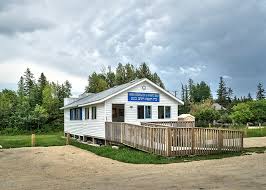
By BERNIE BELLAN (July 13) In 1950 a group of cottage owners at Winnipeg Beach took it upon themselves to relocate a one-room schoolhouse that was in the Beausejour area to Winnipeg Beach where it became the beach synagogue at the corner of Hazel and Grove.
There it stayed until 1998 when it was moved to its current location at Camp Massad.
On August 2nd members of the synagogue will be holding a 75th anniversary celebration.
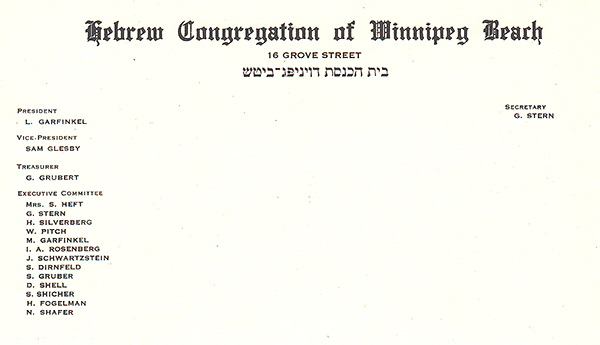
As part of the celebration anyone who is a descendant or relative of any of the original members of the first executive committee (as seen in the photo here) is invited to attend the synagogue that morning.
If you are a relative please contact Abe Borzykowski at wpgbeachshule@shaw.ca or aborzykowski@shaw.ca to let Abe know you might be attending or for more information about the 75th anniversary celebration.
We will soon be publishing a story about the history of the beach synagogue, which is something I’ve been writing about for over 25 years.
Local News
Vickar Family cuts ribbon on new Tova Vickar and Family Childcare Centre
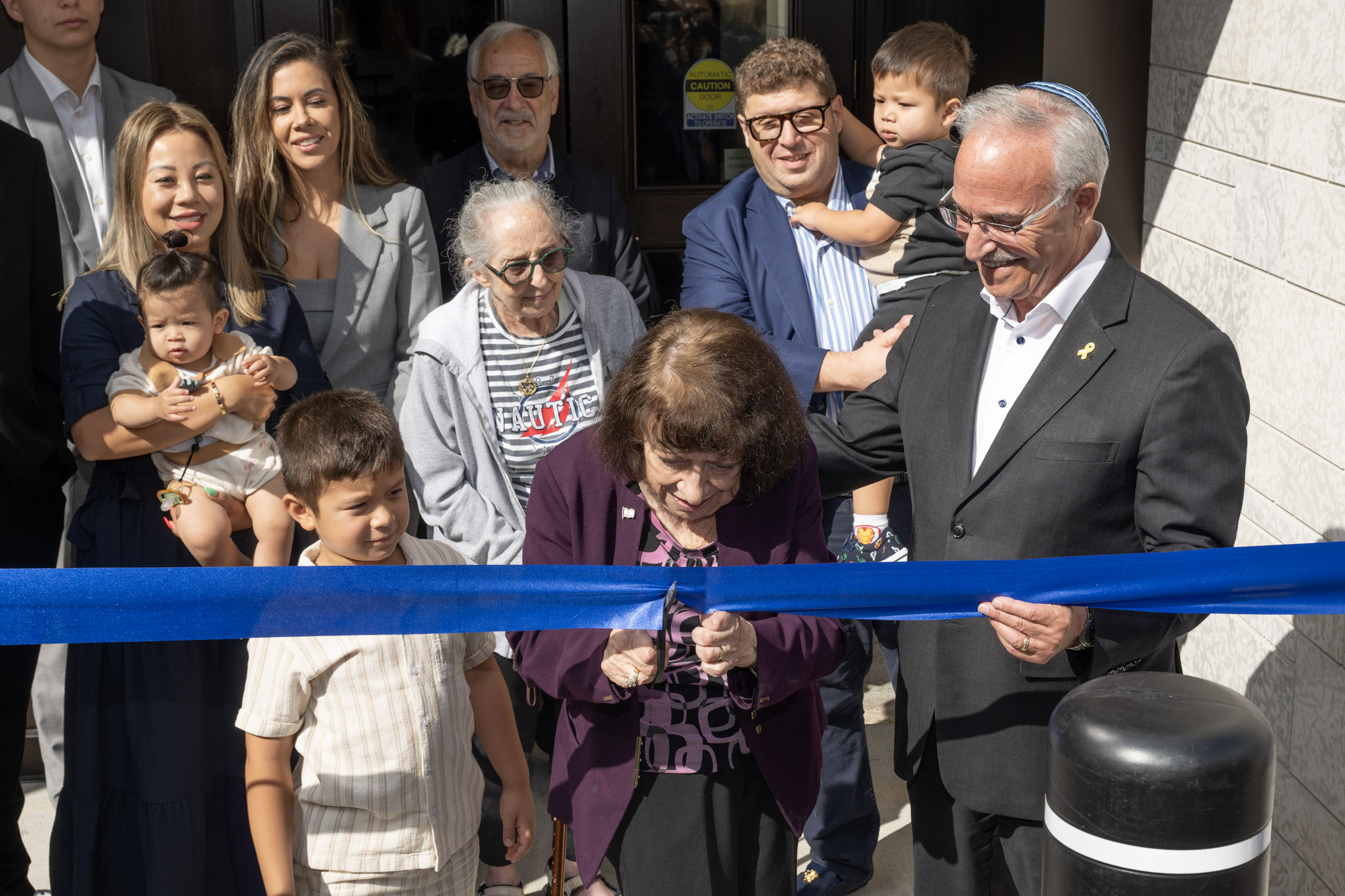
By MYRON LOVE In the words of Larry Vickar, the Shaarey Zedek’s successful Dor V’ Dor Campaign “is not only a renewal of the synagogue but truly a renewal movement of Jewish life in our community.”An integral part of that renewal movement was the creation of a daycare centre within the expanded synagogue. On Monday, June 23, Larry and Tova Vickar cut the ribbon, thereby officially opening the Tova Vickar and Family Childcare Centre in the presence of 100 of their family members, friends and other supporters of the project.
The short program preceding the morning ribbon-cutting began with a continental breakfast followed by a welcome by both Fanny Levy, Shaarey Zedek’s Board President, and Executive Director Dr. Rena Secter Elbaze. In Elbaze’s remarks, she noted that Larry and Tova wanted their family (including son Stephen and family, who flew in from Florida) and friends at the event to celebrate the opening of the Tova Vickar and Family Childcare Centre, “not because of the accolades, but because, as Larry put it, he hopes that their investment in the congregation will inspire others to do the same.”
“When Larry and I spoke about what this gift meant to him and the message he wanted people to take away,” she continued, “I couldn’t help but connect it to the teachings of Reb Zalman Schachter-Shalomi whose book – Age-ing to Sage-ing – changes the whole way we look at the concept of ageing and basing it on our ancestral teachings.”
She explained that his concept of “Sage-ing” is based on three key ideas – Discover your meaning and purpose; accept our mortality and think about the legacy you want to leave.
“Larry spoke about these exact concepts when we met,” she said.
Elbaze also noted the presence of Shaarey Zedek’s newly-arrived senior Rabbi Carnie Rose, former Rabbi Alan Green, and area MLAs Mike Moroz and Carla Compton.
Larry Vickar expressed his great appreciation for all those in attendance. “Tova and I are deeply moved to stand here with you today for this important milestone in our community”, he said. “We are grateful to be surrounded by all of you, the people we care about, our family and friends… you who have touched our lives and played some part in our journey.”
